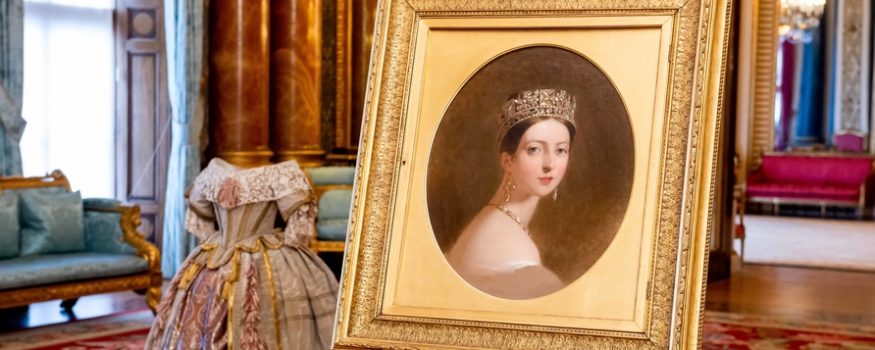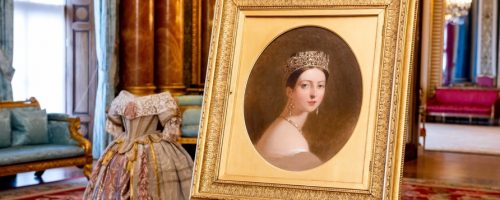To mark the 200th anniversary of the birth of Queen Victoria, a special exhibition Queen Victoria’s Palace at the Summer Opening of Buckingham Palace (20 July – 29 September 2019) will tell the story of how the young monarch turned an unloved royal residence into the centre of social, cultural and official life.
Through objects from the Royal Collection and an immersive experience in the Palace’s Ballroom, visitors will discover how Queen Victoria made Buckingham Palace what it remains today – the headquarters of the monarchy, a rallying point for national celebrations, and a family home.
Ascending the throne in 1837 at 18 years old, Queen Victoria moved into Buckingham Palace three weeks into her reign despite the building being incomplete and many of the room undecorated and unfurnished. The Palace had stood empty for seven years following the death of her uncle, George IV, who had commissioned at great expense the conversion of Buckingham Palace into the designs of John Nash. The King never occupied the Palace, and his successor, William IV, preferred to live at Clarence House during his short reign. Despite Victoria being advised to stay at her childhood home Kensington Palace, she moved in quickly to begin her new life.
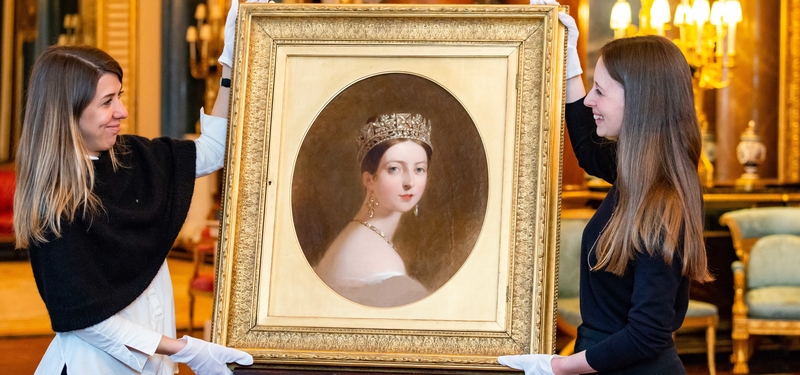
Royal Collection Trust/© Her Majesty Queen Elizabeth II 2019
Among the exhibits is Thomas Sully’s portrait, painted soon after Victoria moved to Buckingham Palace and which provides one of the most striking early likenesses of the young Queen who is shown wearing the Diamond Diadem made for George IV.
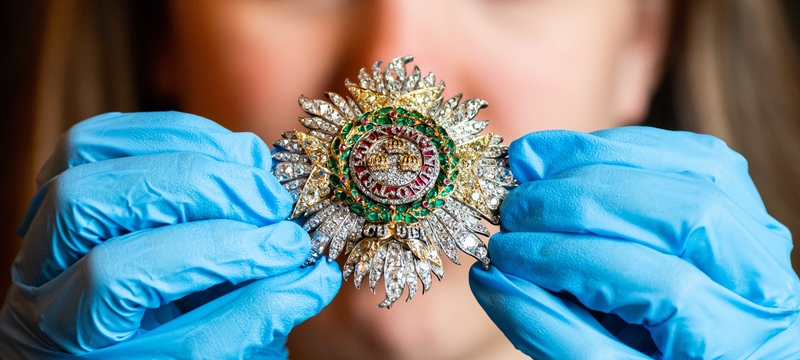
Royal Collection Trust/© Her Majesty Queen Elizabeth II 2019
Victoria also ordered a new set of personal insignia for each of the six British Orders of Chivalry. Visitors can view the Star and Collar of the Order of the Bath, which were considerably lighter and longer than previous versions so they could be worn just below the shoulders to complement the necklines on her formal dresses.
In 1846 Parliament granted Queen Victoria £20,000 for the completion and extension of the Palace to accommodate her rapidly growing family following her marriage to Prince Albert of Saxe-Coburg and Gotha. Additional funds were also raised from the sale of George IV’s seaside retreat, the Royal Pavilion, the Brighton Corporation for £50,000.
Over the next several years the East Wing was added to the front, enclosing what had previous been an open, horseshoe-shaped courtyard and introducing the now famous central balcony. A new Ballroom was also added to the State Rooms to allow the comfortable hosting of balls, concerts and other official events.
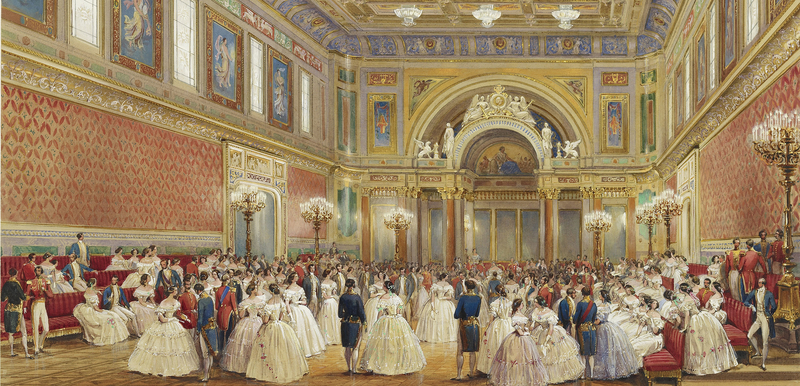
Royal Collection Trust/© Her Majesty Queen Elizabeth II 2019
Inaugurated in May 1856, a ball was held shortly after in June to mark the end of the Crimean War and to honour the returning soldiers. A watercolour by Louis Haghe is the only surviving record of the Ballroom’s original Italian Renaissance-inspired decoration devised by Prince Albert’s artistic mentor, Ludwig Gruner.
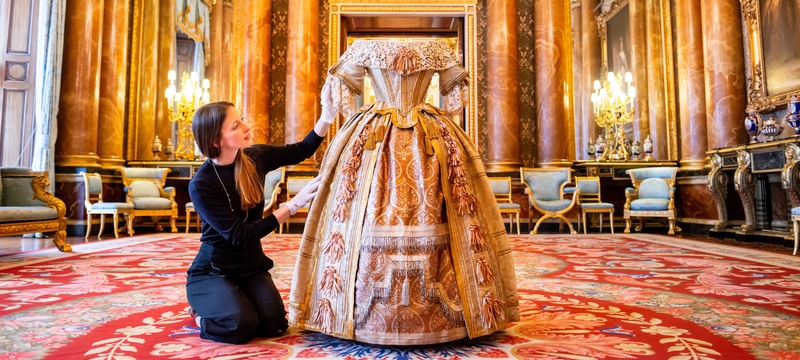
Royal Collection Trust/ © Her Majesty Queen Elizabeth II 2019
Visitors can also view Queen Victoria’s costume for the Stuart Ball of 1851, which was themed around the Restoration period. Designed by the artist Eugène Lami, the dress has a bodice and full skirt of grey moiré trimmed with gold lace and an underskirt of gold and silver brocade.
A waltz danced at the Crimean Ball and the Ballroom’s original decorative scheme will be recreated as part of the exhibition. A Victorian illusion technique known as Pepper’s Ghost, in addition to projections around the room will enable visitors to imagine the Ballroom as Victoria and Albert would have known it.



